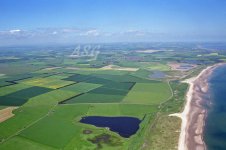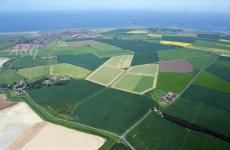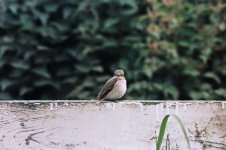Yes Alan ,Thanks a good informative read , not having seen the previous plans that may have sparked the uproar , however I am a bit of a cynic and think developers in general submit outlandish proposals which create outrage , proposals are then revised to what was required in the first place ,which are then met with more agreement .
As you have pointed out especially now advanced restoration is the order of the day the benefits seem to outweigh the negatives ,I think from my point of view some previously restored sites have not advanced/developed much over the years so how are all these other sites to be maintained .
Cheers
Brian
In what way Brian? The restored sites at Linton, Acklington, Chester House, Togston, Radcliffe, Coldrife (Druridge Bay CP), Ladyburn, all now have mature hedges and semi-mature/mature trees, broadleaf and conifer. All but Linton are on the bay or just inland. The same goes for Butterwell, at Longhirst. The fields grow a variety of crops and pasture and are well matured, indistinguishable from the unworked land around them. I'd say these sites have come on very well indeed. I've purposely left Radar, Chibburn etc out of this list, because unfortunately they were restored to earlier standards of restoration in the 1950s and 60s when the industry was still in its infancy and feeling its way. I've also left out the sites that have just finished and are still in the 5 year aftercare plans, such as Stobswood, Steadsburn, Maiden's Hall and others in that vicinity. They've not had time to develop.
I'm referring to the agricultural and woodland restoration here of course, not the nature reserves. The management of those reserves since they were handed over is entirely up to the current owners and nothing to do with them being ex-opencast sites. Maybe that's what you're referring to. Take Cresswell for instance. It was never opencasted.
Regarding your
'I am a bit of a cynic and think developers in general submit outlandish proposals which create outrage , proposals are then revised to what was required in the first place ,which are then met with more agreement' I realise that is a view, but having been employed in the development side as well as the operational side of the business, I can assure you that is not the case.
Outrage was the last thing we set out to achieve. We put forward what we saw as the optimal proposal having already put in stand-offs from sensitive locations and other concessions, giving due regard to current planning guidance before even going to consultation prior to planning applications, taking account of what we thought the planners might find acceptable. Sometimes the plans went forward more or less as envisaged, but more often further concessions were made in the consultation process, sometimes these concessions were minor, sometimes major. I remember one site I was designing where I thought I had it right, but following a chat with a local resident at a public meeting I went back and spent the next few days redesigning the site entrance location, plant yard location and screening mound location around the yard. All to no avail. We never went forward with that site.
It appears that in the case of Highthorn, Banks have made very major concessions indeed. When this site was first being looked at by British Coal in the 1980s it was a toss-up whether to go for it or Stobswood as a replacement for Butterwell, a 1 million tonne per year site that was coming to an end. They decided to go for Stobswood and leave Highthorn on the shelf. It was a lot bigger in those days, but market and other conditions have changed since then. Having said that, anyone wanting wildlife considerations, habitat creation etc is pushing against an open door with the developers. They love it. The people involved with the site design are often as interested as we are, the bean-counters think it will look good and reduce opposition to other sites. Of course it never does - look at this one. No-one even noticed the promised wildlife improvements, but they were there for all to see at various stages of the consultation, pre-application. All that gets noticed are the campaign groups and their rhetoric. The press doesn't do good news.
As regards outrage - that comes whatever you do. It sells papers and there are more votes for local politicians being against something unpopular than there are for being in favour of it, whatever the merits in reality. We tried to adapt and convince, but there are some who do not want to be convinced and won't be. The only adaptation they would be happy with is 'not here'.
Our problem was, 'not here' wasn't always an option. You can only mine coal where it lies and it doesn't lie everywhere, we are not 'an island built on coal'. Even where it is it isn't always economical to mine, so you go where you can - and that usually ends up near a town or village that was built there in the first place in the 1800s/ 1900s or whenever precisely because it was sitting on top of coal reserves.






